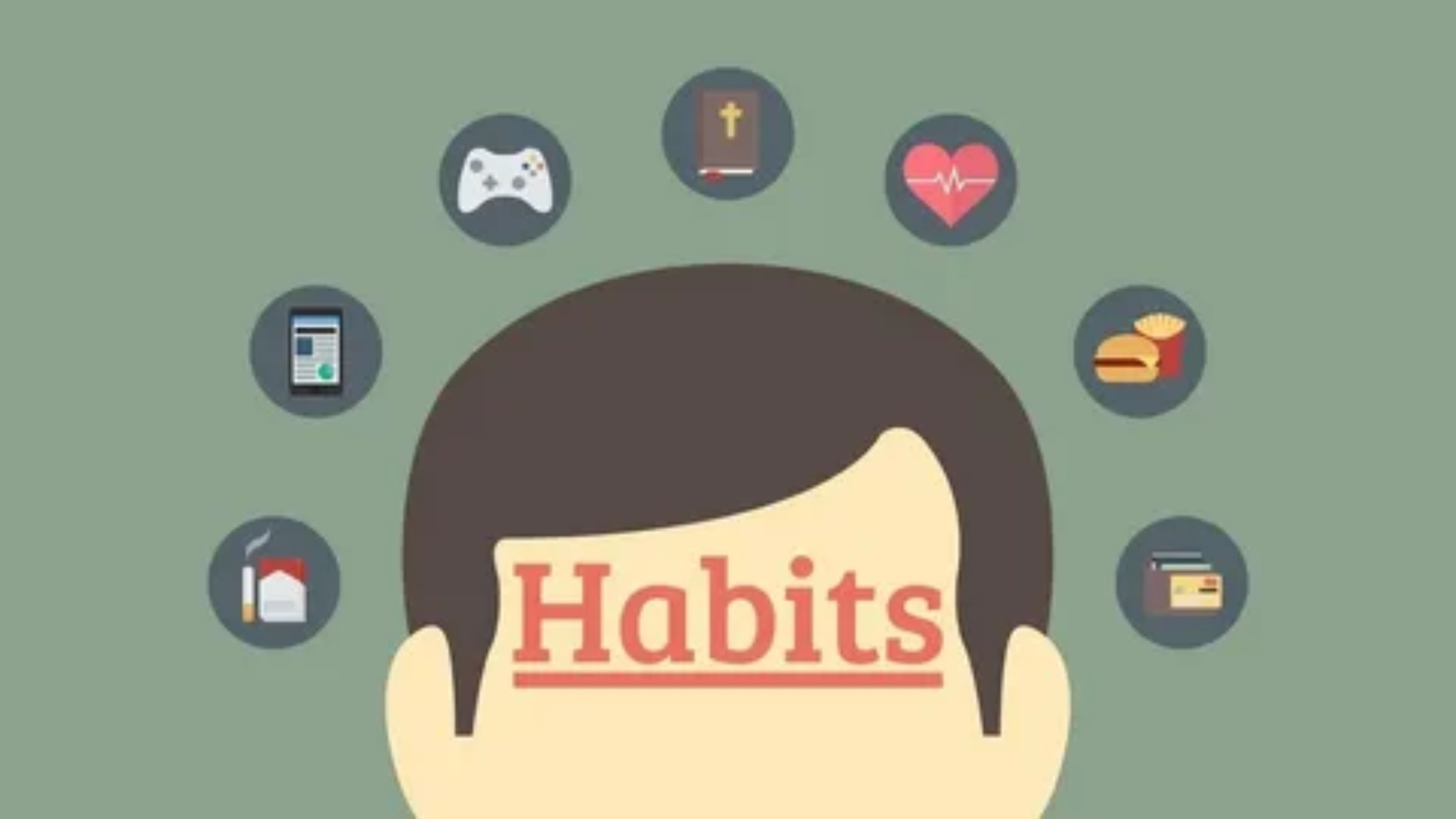Habits are like that stubborn ketchup bottle that refuses to cooperate—sometimes they just don’t budge no matter how hard you shake them. But the positive news is, with the right mindset and a sprinkle of determination, you can break those harmful habits and replace them with healthier ones. Whether you’re struggling with late-night snacking, endless social media scrolling, or skipping workouts, this guide is here to help you turn things around. Let’s dive in!
Why Do Bad Habits Stick Around?
Before we jump into fixing anything, let’s take a moment to understand why undesirable habits feel like uninvited houseguests who overstay their welcome.
1. The Science Behind Habits
The basal ganglia, a region of your brain responsible for automatic behaviors, forms habits. Over time, repeating the same action creates a neural pathway, like carving a groove into a piece of wood. The deeper the groove, the harder it is to get out of it.
Fun Fact: Your brain loves shortcuts. That’s why it sticks to habits—it’s just trying to save energy. So, technically, your brain is lazy.
2. The Cue-Routine-Reward Loop
Habits follow a three-step pattern:
- Cue: Something triggers your habit.
- Routine: The behavior itself.
- Reward: The feeling or benefit you get from it.
For example:
- Cue: Stressful workday.
- Routine: Grab a tub of ice cream.
- Reward: Temporary comfort (and a future sugar crash).
If you want to break a habit, you need to disrupt this cycle.
Step 1: Identify the Problem
The first step to breaking a harmful habit is calling it out. Think of yourself as a detective uncovering the culprit behind your less-than-stellar choices.
Ask yourself the hardest questions.
- What harmful habit am I trying to break?
- When do I usually engage in this behavior?
- What triggers it?
- What reward am I getting?
Pro Tip: Keep a journal for a week and jot down when and why you do the thing you want to stop. Patterns will become apparent more quickly than a cat reacting to a laser pointer.
Step 2: Replace, Don’t Erase
Ever tried going cold turkey? It’s like telling yourself not to think about a pink elephant—you’ll think about it more! Instead of simply trying to eliminate a harmful habit, replace it with something better.
Healthy Swaps
Here’s a table of common detrimental habits and healthier alternatives:
| Bad Habit | Healthier Choice |
|---|---|
| Binge-watching TV till 2 AM | Read a book or listen to a podcast. |
| Stress eating | Take a walk or try deep breathing. |
| Scrolling social media endlessly. | Pick up a hobby like painting or cooking. |
| Skipping workouts | Do a quick 10-minute home exercise. |
Tip: Make the healthier habit simple and accessible. If your goal is to eat more fruits, keep a bowl of fresh apples on the counter instead of hiding them in the fridge’s crisper drawer (a.k.a. the land of forgotten produce).
Step 3: Use the Power of Micro-Changes
Your dream of giving up that extra-large caramel frappuccino habit won’t materialize overnight. Start small.
Baby Steps to Big Wins
- Scale it Down: If your goal is to exercise daily, begin with just 5 minutes.
- Pair It Up: Attach the new habit to an existing one. For example, you could perform squats while brushing your teeth, but avoid using an electric toothbrush as it could cause mess.
- Reward Yourself: Celebrate small wins. Have you successfully abstained from junk food for a week? Treat yourself to a non-food reward like a movie night or a new book.
Step 4: Tame Your Triggers
If you continue to indulge in temptation, it will eventually cause you discomfort. Identify your triggers and find ways to avoid or manage them.
Common Triggers and Solutions
- Trigger: Feeling bored.
Solution: Keep your hands busy—knitting, doodling, or even solving puzzles. - Trigger: Stress.
Solution: Practice mindfulness or yoga. Bonus: You’ll feel like a Zen master. - Trigger: Social settings.
Solution: Set boundaries or bring your own healthier alternatives.
Step 5: Build a Support System
Breaking harmful habits can feel like a solo mission, but it doesn’t have to be. Rope in friends, family, or even a supportive online community.
How to Get Support
- Accountability Partner: Find someone who’ll keep you in check (and call you out for skipping your morning jog).
- Cheerleaders: Surround yourself with people who motivate you.
- Professional Help: Sometimes, a coach or therapist can work wonders.
Funny Take: Steer clear of the friend who consistently suggests that a single piece of cake won’t cause harm. This friend is likely the reason you’re reading this article.
Step 6: Practice Self-Compassion
Slip-ups are inevitable, and that’s okay! The key is not to let one mistake snowball into a week of disastrous choices.
The 80/20 Rule
Aim to stick to your healthier habits 80% of the time. The other 20%? Enjoy life guilt-free! After all, one cheat meal won’t ruin your progress, just like one salad won’t magically make you fit.
Step 7: Track Your Progress
What gets measured gets managed. Keep tabs on how far you’ve come—it’ll boost your motivation.
Tools to Help You Track
- Apps: Try habit-tracking apps like Habitica or Streaks.
- Visual Cues: Use a calendar to mark successful days with a big, satisfying “X.”
- Journaling: Reflect on what’s working and what isn’t.
The Golden Rule: Be Patient
Breaking harmful habits is a marathon, not a sprint. Some experts say it takes 21 days to form a habit, while others suggest 66 days. Bottom line? It takes time, but every small step counts.
The Funny Side of Breaking Habits
Here’s a lighter look at the process:
- Day 1: “I’m so motivated! I’ve got this!”
- Day 3: “Okay, maybe just one cookie…”
- Day 7: “Who am I kidding? Let me restart on Monday.”
- Day 30: “Wait, I haven’t craved cookies in weeks. Who am I?”

Conclusion: You Can Do This!
Breaking bad habits isn’t easy, but it’s 100% worth it. By understanding your triggers, making small changes, and being kind to yourself, you’ll set yourself up for success. Remember, you’re not just breaking habits; you’re building a better, healthier version of you.










Leave a Reply